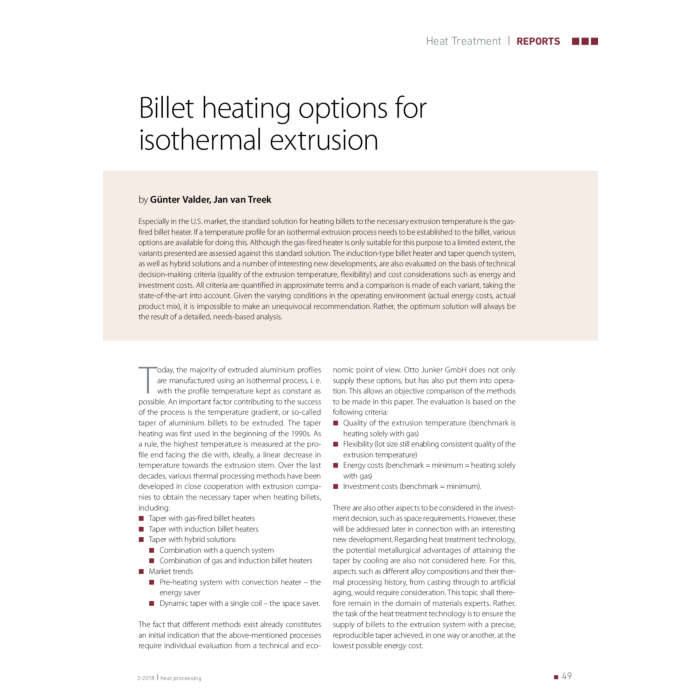Billet heating options for isothermal extrusion
Especially in the U.S. market, the standard solution for heating billets to the necessary extrusion temperature is the gas-fired billet heater. If a temperature profile for an isothermal extrusion process needs to be established to the billet, various options are available for doing this. Although the gas-fired heater is only suitable for this purpose to a limited extent, the variants presented are assessed against this standard solution. The induction-type billet heater and taper quench system, as well as hybrid solutions and a number of interesting new developments, are also evaluated on the basis of technical decision-making criteria (quality of the extrusion temperature, flexibility) and cost considerations such as energy and investment costs. All criteria are quantified in approximate terms and a comparison is made of each variant, taking the state-of-the-art into account. Given the varying conditions in the operating environment (actual energy costs, actual product mix), it is impossible to make an unequivocal recommendation. Rather, the optimum solution will always be the result of a detailed, needs-based analysis.
| Authors | by Günter Valder, Jan van Treek |
|---|---|
| Publishing Date | 1 Feb 2018 |
| Format | |
| Publisher | Vulkan-Verlag GmbH |
| Language | German |
| Title | Billet heating options for isothermal extrusion |
| Description | Especially in the U.S. market, the standard solution for heating billets to the necessary extrusion temperature is the gas-fired billet heater. If a temperature profile for an isothermal extrusion process needs to be established to the billet, various options are available for doing this. Although the gas-fired heater is only suitable for this purpose to a limited extent, the variants presented are assessed against this standard solution. The induction-type billet heater and taper quench system, as well as hybrid solutions and a number of interesting new developments, are also evaluated on the basis of technical decision-making criteria (quality of the extrusion temperature, flexibility) and cost considerations such as energy and investment costs. All criteria are quantified in approximate terms and a comparison is made of each variant, taking the state-of-the-art into account. Given the varying conditions in the operating environment (actual energy costs, actual product mix), it is impossible to make an unequivocal recommendation. Rather, the optimum solution will always be the result of a detailed, needs-based analysis. |

